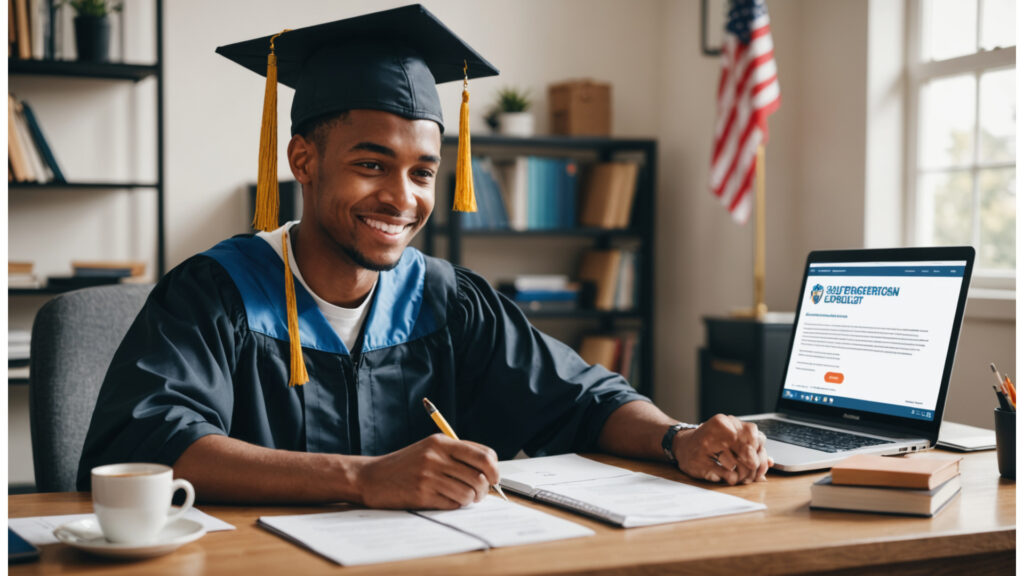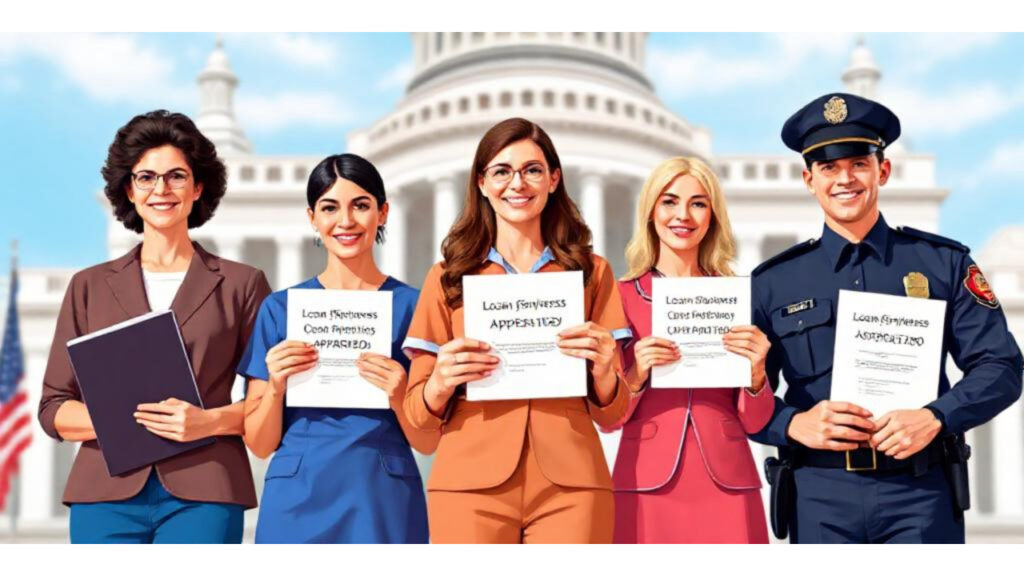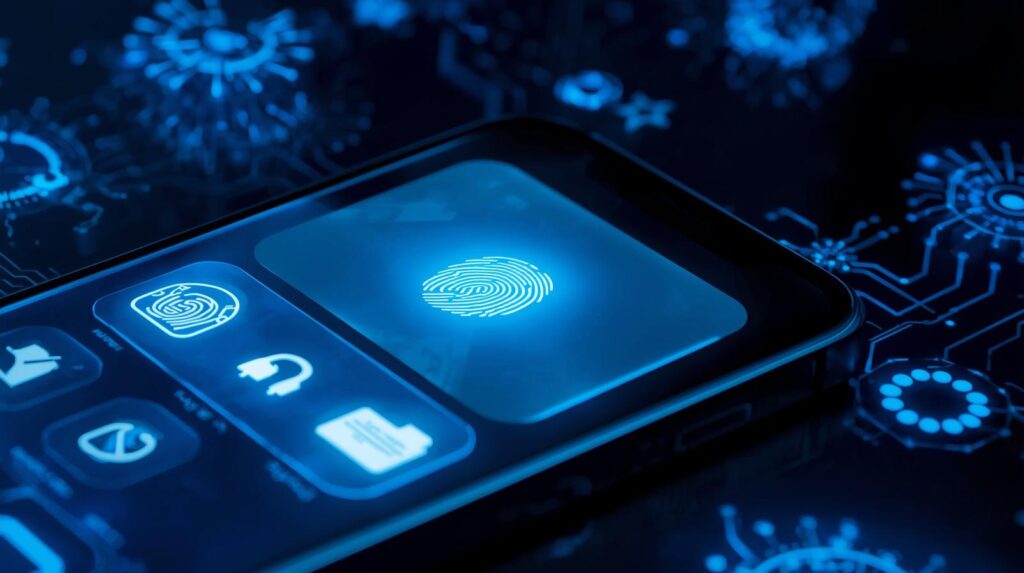Introduction

Millions of borrowers are asking in 2025: Will my student loans be forgiven? Understanding how student loan forgiveness 2025 works is crucial. This guide explains eligibility requirements, the latest updates from the U.S. Department of Education, and how you can find out if your loans qualify for forgiveness programs.
This guide breaks down how to know if your student loans will be forgiven, the different forgiveness programs available, who qualifies, and how to apply for them. Whether you’re a teacher, public service worker, or simply struggling with debt, this article will help you determine where you stand.
1. What Is Student Loan Forgiveness?
Student loan forgiveness means you are no longer required to repay part or all of your federal student loans. The U.S. Department of Education offers forgiveness, cancellation, or discharge programs for borrowers who meet specific criteria such as:
- Working in public service or education
- Experiencing financial hardship or disability
- Being misled by a school (borrower defense)
- Making consistent payments under income-driven repayment (IDR) plans
Private student loans, however, are not eligible for federal forgiveness programs. Forgiveness generally applies only to federal student loans such as Direct Loans, FFEL Loans, and Perkins Loans.

2. The Major Student Loan Forgiveness Programs in 2025
There are several federal programs that may forgive your student loans, depending on your career, repayment plan, or circumstances.
a. Public Service Loan Forgiveness (PSLF)
The PSLF progrhttps://studentaid.gov/manage-loans/forgiveness-cancellation/public-serviceam forgives the remaining balance on your Direct Loans after you make 120 qualifying monthly payments while working full-time for a qualifying employer — typically a government agency or nonprofit organization.
Eligibility Requirements:
- Must have Direct Loans (or consolidate to one)
- Must be enrolled in an income-driven repayment (IDR) plan
- Must work for a qualified public service employer
- Must make 120 on-time payments (about 10 years)
Example: Teachers, nurses, military members, and government employees often qualify for PSLF.
b. Teacher Loan Forgiveness
Teachers who work full-time in a low-income school or educational service agency for five consecutive years may be eligible for forgiveness of up to $17,500 on Direct or Stafford Loans.
Key Points:
- You must be a highly qualified teacher in math, science, or special education.
- The school must be listed in the Annual Directory of Designated Low-Income Schools for Teacher Cancellation Benefits.
- You can qualify for both Teacher Loan Forgiveness and PSLF, but not for the same period of service.
c. Income-Driven Repayment (IDR) Forgiveness
Under an IDR plan, your monthly payment is based on your income and family size. After making payments for 20 to 25 years, any remaining balance is forgiven.
The four main IDR plans are:
- SAVE Plan (formerly REPAYE) – Most generous and widely used in 2025.
- PAYE (Pay As You Earn)
- IBR (Income-Based Repayment)
- ICR (Income-Contingent Repayment)
Example:
If you earn $40,000 a year and have $60,000 in loans, your SAVE Plan could lower your monthly payment to under $100. After 20 years of payments, your remaining balance could be forgiven.
d. Borrower Defense to Repayment
If your school misled you, closed down, or violated certain laws, you may be eligible for loan discharge through Borrower Defense to Repayment.
Examples:
- The school promised job placement rates that were false.
- The institution closed before you could complete your program.
Approved borrowers can have 100% of their loans canceled, plus potential refunds of payments already made.
e. Total and Permanent Disability (TPD) Discharge
Borrowers who are totally and permanently disabled can apply for TPD discharge of federal student loans.
Requirements:
- Provide documentation from the Department of Veterans Affairs (VA), Social Security Administration (SSA), or a physician.
- Once approved, you will no longer be required to make payments, and your credit report will reflect “discharged due to disability.”
f. Perkins Loan Cancellation
If you have an older Perkins Loan, you may qualify for partial or full cancellation depending on your job. Eligible professions include:
- Teachers in low-income areas
- Law enforcement officers
- Nurses or medical technicians
- Members of the armed forces
3. How to Check Your Student Loan Forgiveness Eligibility 2025
Knowing whether your loans are eligible for forgiveness requires a few key steps:
Step 1: Verify Your Loan Type
Log into your Federal Student Aid (FSA) account at studentaid.gov.
Look under the “My Aid” section to confirm whether you have Direct Loans, FFEL Loans, or Perkins Loans.
Only Direct Loans are automatically eligible for PSLF and most IDR forgiveness programs.
Step 2: Review Your Employment
If you work for a government agency, public school, or nonprofit, you likely qualify for PSLF. Use the PSLF Help Tool on the FSA website to verify if your employer qualifies.
Step 3: Check Your Repayment Plan
You must be on an income-driven repayment plan for PSLF or IDR forgiveness.
If you’re on the Standard Repayment Plan, your balance will be zero after 10 years — meaning there’s nothing left to forgive.
Step 4: Confirm Your Payment History
To qualify for PSLF, you must have made 120 qualifying payments under a qualifying employer.
You can request a payment count review through your loan servicer (e.g., MOHELA, Nelnet, or Aidvantage).
Step 5: Submit Forgiveness Applications
Each program has its own application form:
- PSLF: Public Service Loan Forgiveness Form
- Teacher Loan Forgiveness: Teacher Loan Forgiveness Application
- Borrower Defense: Borrower Defense Application via studentaid.gov
4. Updates and Changes in 2025
The Biden administration continues to expand forgiveness through:
- SAVE Plan Enhancements: Lower payments and faster forgiveness for low-balance borrowers (as soon as 10 years).
- One-Time IDR Account Adjustment: Borrowers are getting extra credit toward forgiveness for past repayment periods.
- Targeted Forgiveness Initiatives: Additional relief for borrowers in specific hardship categories.
As of 2025, more than 4 million borrowers have already received forgiveness under these programs, and new approvals are being processed monthly.
5. Common Reasons Forgiveness Is Denied
Even if you think you qualify, applications can be denied for reasons such as:
- Being on the wrong repayment plan
- Missing or late payments
- Employer not qualifying under PSLF rules
- Having private loans instead of federal loans
- Incomplete or outdated paperwork
Tip: Always re-certify your employment and income each year through your loan servicer.
6. What About Private Student Loans?
Unfortunately, private student loans are not eligible for federal forgiveness.
However, private borrowers can explore:
- Refinancing to lower interest rates
- Hardship assistance from lenders
- State-specific relief programs
Some states and employers are beginning to offer loan repayment assistance programs (LRAPs) that can help reduce private debt.
7. How to Prepare Your Application
To maximize your chances:
- Gather all employment verification documents.
- Review your repayment history on studentaid.gov.
- Complete the correct application form for your program.
- Submit through your loan servicer and keep a copy for your records.
- Regularly check your email for status updates.
The process can take several months, so patience and thorough documentation are key.
8. The Bottom Line: Will Your Student Loans Be Forgiven?
If you have federal student loans and meet certain criteria — such as public service, consistent payments, or verified hardship — there’s a good chance you may qualify for forgiveness in 2025.
The key is to know your loan type, repayment plan, and employment status. With multiple programs available, forgiveness is now more accessible than ever before.
Next Step: If you’re unsure about your student loan forgiveness eligibility 2025, log in to studentaid.gov to review your loan type, payment history, and qualifying employer status.


